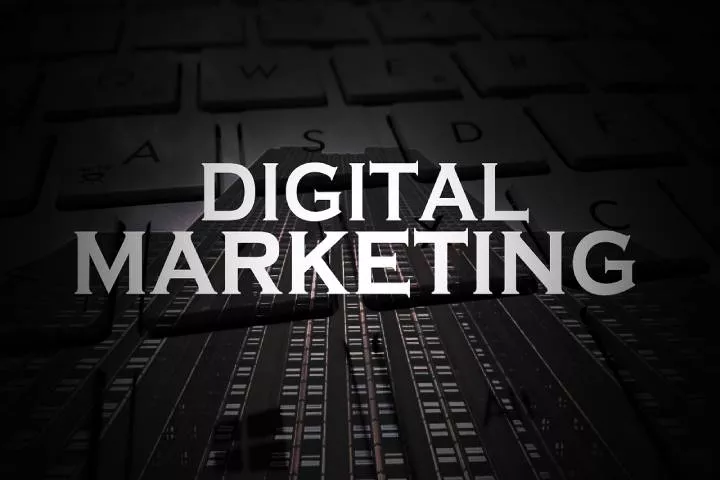Business
Two Trends Shaping Production Planning Software Solutions
Some business leaders looked to technology to help with the burden and looked to production planning software to boost future proof production.

The COVID-19 pandemic showed how fragile the global supply chain could be. For many small manufacturers, downtime resulted in lost earnings and increased pressure on the business to keep the doors open and retain employees. This was not often the case, and many had to downsize.
Some business leaders looked to technology to help with the burden and looked to production planning software to boost future-proof production. Such software is not a silver bullet, but it can be an asset during uncertain times. Further, with two trends developing in the market, the asset’s value is now set to increase.
1. Machine Learning
While machine learning is often portrayed as a holy grail for many industries, those within production planning have cautiously approached its adoption. This is mainly due to its posing a tough problem-solving in production planning than in other manufacturing environments. This is due in part to the number of variables generated from different sources production planning software needs to factor in.
Despite the difficulty, solutions can be found, and the central concept of machine learning, namely continuous improvement can be realized. Currently, the software can collect, analyze, and visualize data generated from multiple sources allowing for machine learning to take place.

Questions regarding the return on investment still will need to be asked by smaller manufacturers. However, solutions are available that target smaller enterprises. These solutions can provide high-fidelity insights into operations that are easily overlooked or not considered at all.
Production planning may lag behind other industries’ adoption of machine learning technology, but that does not mean it is not coming. While integration may be slower, it is breaking new ground for not only production planning but also machine learning. It is taking on even more complex systems than originally realized.
2. Continuous Planning and Execution
The recent pandemic showed that plans needed to be flexible to overcome hurdles global events can place in front of organizations. One way to remain flexible and prevent crashing into barriers is by adopting continuous planning and execution methodologies.
The idea can fill a textbook, but in providing an oversimplification of the concept, plans are treated as living objects rather than stages set in stone. The program can respond to events and sudden changes, whether determined by the manufacturer or a global phenomenon.

Providing an example of this flexibility helps to consider a typical manufacturer’s 30-day plan. Traditional planning methods rely on forecasts made by the designated team, which have to take into account the demand for manufactured goods and the costs involved.
What if suppliers are not able to deliver as promised? Or bringing the product to market is delayed by some unforeseen consequence? As continuous planning produces actionable plans more frequently, it allows for more rapid adoption of policies and execution, avoiding pitfalls, as there may be multiple plans spanning time frames of as little as a week.
3. Conclusion
Production planning has always been a complex affair. Current software solutions can make this difficult task easier. With the adoption of the trends mentioned above, that task is set to become even easier.
Business
Navigating the Process of Selling Deceased Estate Shares
This article aims to provide a comprehensive guide to selling shares from a deceased estate. Process of Selling Deceased Estate Shares.

Table of Contents
1. Understanding the Basics of Selling Deceased Estate Shares
Dealing with a deceased estate can be a challenging and emotional process, especially when it comes to handling financial assets like shares. This article aims to provide a comprehensive guide to selling shares from a deceased estate.
2. What are Deceased Estate Shares?
Deceased estate shares refer to the stocks and shares that were owned by an individual who has passed away. These shares become part of the deceased’s estate and are subject to the terms of their will or estate plan.
3. The Importance of Valuing the Shares
The first step in selling deceased estate shares is to obtain a current valuation. This valuation is crucial for several reasons: it helps in distributing the estate among beneficiaries, it may be necessary for tax purposes, and it gives an idea of the market value of the shares.
4. Legal Requirements and Executor Responsibilities
The executor of the estate plays a pivotal role in the management and distribution of the deceased’s assets. This section will cover the legal responsibilities and steps the executor needs to take to lawfully sell the shares.
5. Obtaining Probate
Before any action can be taken with the shares, it’s often necessary to obtain probate. Probate is a legal process that confirms the executor’s authority to deal with the deceased’s assets.
Transferring Shares into the Executor’s Name
Once probate is granted, shares may need to be transferred into the name of the executor. This process varies depending on the company and the type of shares.
6. The Process of Selling Shares
After completing legal formalities, the executor can proceed with selling the shares. This section will outline the steps involved in this process, including choosing a brokerage or financial service, understanding market conditions, and making informed decisions.
Deciding on the Right Time to Sell
Timing can significantly impact the returns from selling shares. Executors need to consider market conditions and financial advice to determine the best time to sell.
Completing the Sale
This subsection will detail the actual process of selling shares, including placing orders, handling transaction fees, and ensuring all regulatory requirements are met.

7. Navigating Tax Implications and Reporting
Managing tax obligations is a critical aspect of selling deceased estate shares. This section will explain the potential tax implications and the importance of accurate reporting for both capital gains tax and inheritance tax considerations.
Understanding Capital Gains Tax Responsibilities
When shares are sold, any profit made from the time of the deceased’s passing to the sale date may be subject to capital gains tax. Executors need to be aware of these implications and plan accordingly.
Inheritance Tax Considerations
In some jurisdictions, the value of the deceased estate’s shares might impact inheritance tax calculations. It’s essential for executors to understand these aspects in order to ensure compliance with tax laws.
8. Common Challenges and How to Overcome Them
Selling deceased estate shares can present unique challenges. This section will discuss common issues such as disputed wills, fragmented information about the shares, and market volatility.
Dealing with Disputed Wills and Beneficiary Disagreements
Disputes over the will or disagreements among beneficiaries can complicate the process. Executors must handle these situations delicately and legally.
Managing Market Volatility
Shares can be subject to market fluctuations. Executors should be prepared for this volatility and may need to consult financial advisors to navigate these waters effectively.
9. Tips for Executors Handling Deceased Estate Shares
This section will provide practical advice for executors, including the importance of seeking professional advice, keeping thorough records, and communicating clearly with beneficiaries.
Seeking Professional Financial and Legal Advice
The complexity of selling shares from a deceased estate often necessitates professional advice. This can range from legal counsel to financial advisory services.
Record Keeping and Communication with Beneficiaries
Maintaining transparent and thorough records is crucial. Executors should also prioritize clear and consistent communication with all beneficiaries to avoid misunderstandings.
Conclusion
Selling shares from a deceased estate is a responsibility that requires careful attention to legal, financial, and interpersonal dynamics. By understanding the process, staying informed about tax obligations, and tackling challenges head-on, executors can fulfill their duties effectively and respectfully.

 Instagram3 years ago
Instagram3 years agoBuy IG likes and buy organic Instagram followers: where to buy them and how?

 Instagram3 years ago
Instagram3 years ago100% Genuine Instagram Followers & Likes with Guaranteed Tool

 Business5 years ago
Business5 years ago7 Must Have Digital Marketing Tools For Your Small Businesses

 Instagram4 years ago
Instagram4 years agoInstagram Followers And Likes – Online Social Media Platform





















